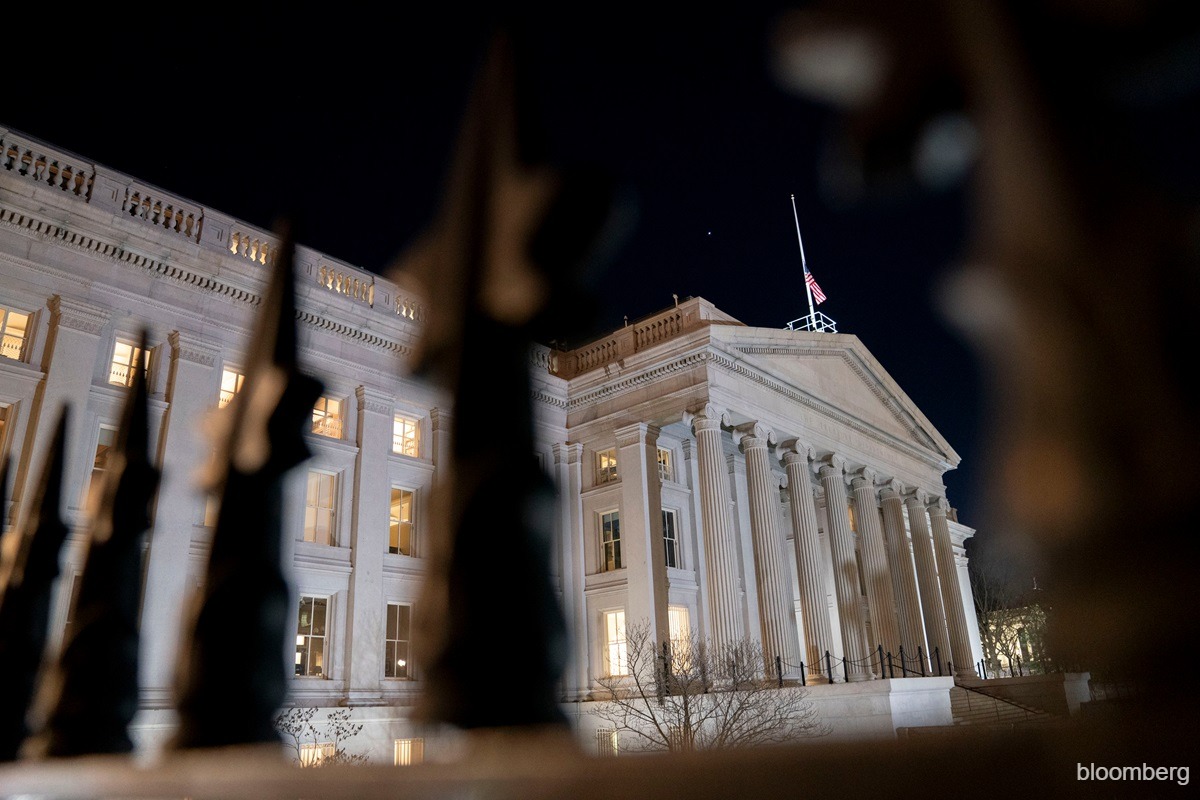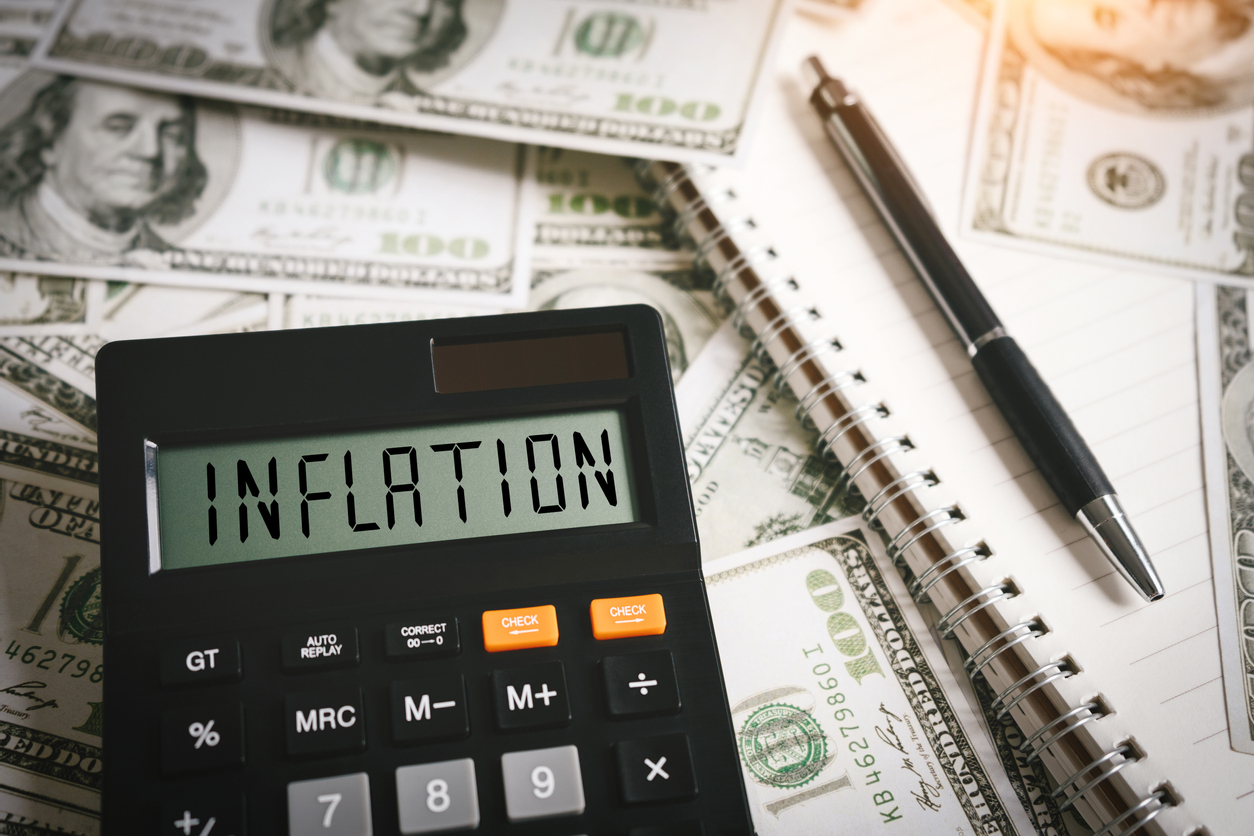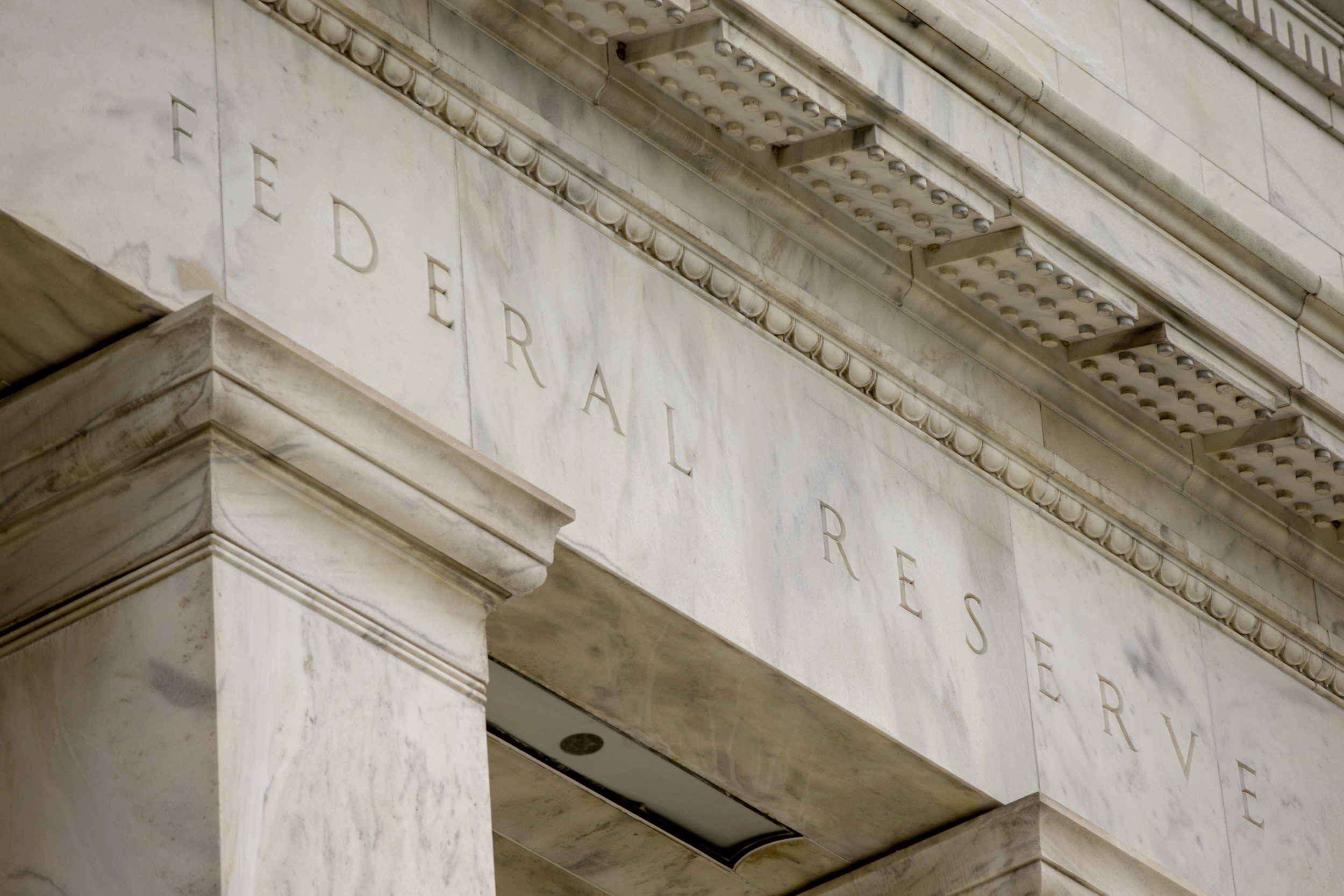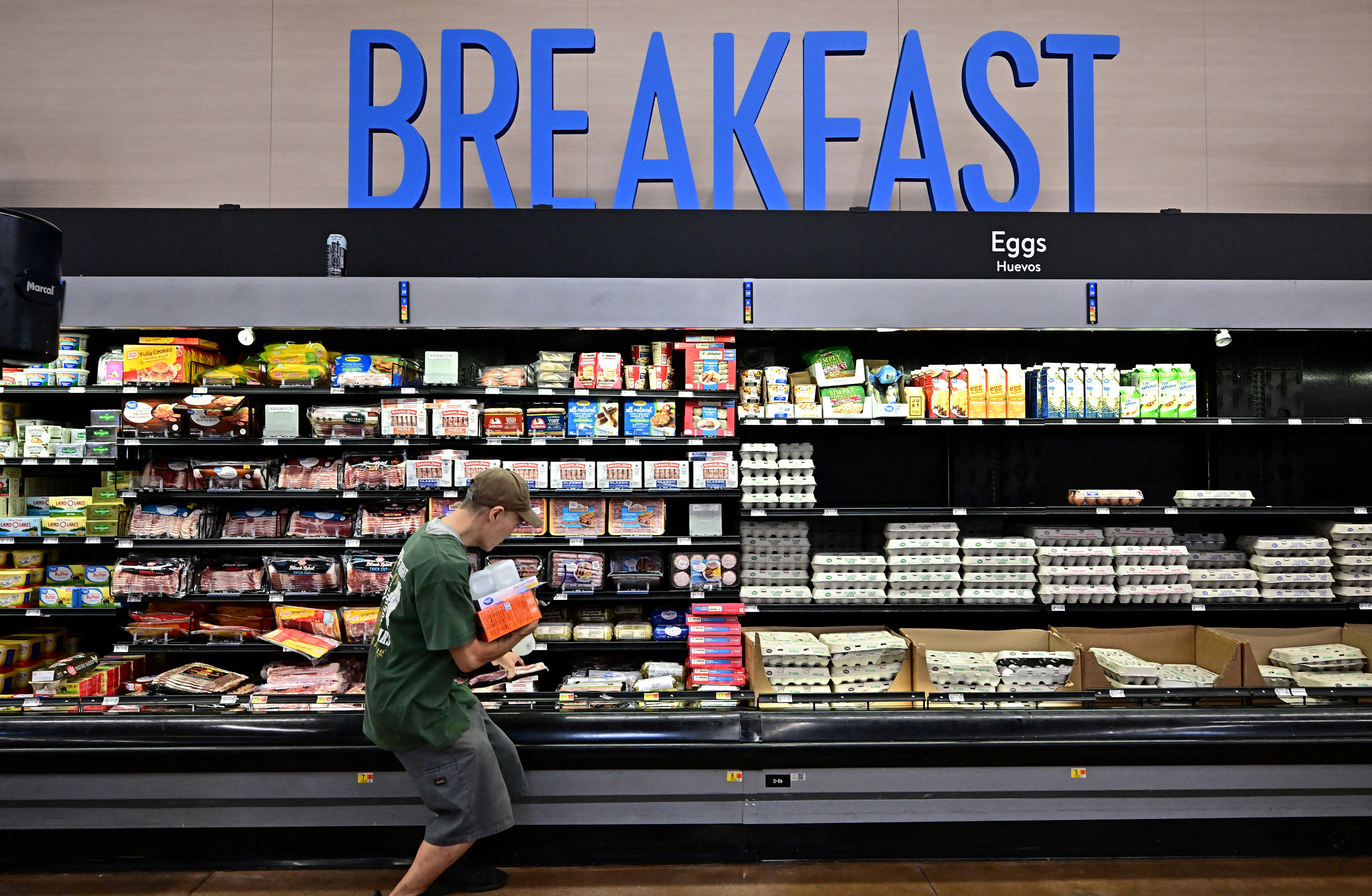



















/tpg%2F1edcf692-49ce-4e28-b138-d4b412cd5ac9.jpeg)










As inflation continues to linger in the United States, recent developments have raised concerns about its potential trajectory. The Consumer Price Index (CPI) rose by 2.6% in December 2024, with core prices increasing by 2.8%. This marks a sustained inflation rate of around 2.5% for the past six months, prompting the Federal Reserve to pause interest rate cuts, maintaining the key rate at 4.3%. Federal Reserve Chair Jerome Powell has suggested that the Fed is closely monitoring inflation pressures, which may rise due to the potential for new tariffs. [4f6c9584]
Former President Donald Trump has threatened to impose 25% tariffs on imports from Canada and Mexico starting February 1, 2025, alongside a 10% tariff on goods from China. Analysts warn that these tariffs could exacerbate inflationary pressures, nudging prices in the wrong direction. Paul Ashworth, a prominent economist, cautioned that the tariffs could lead to increased costs for consumers, further complicating the inflation landscape. Trump's administration has indicated that any price rises resulting from these tariffs will be blamed on foreign entities, shifting the narrative towards foreign policy. [4f6c9584] [9b75ab2b] [edd4076d]
Federal Reserve officials have expressed concerns about the inflation risks stemming from these tariffs. Chicago Fed President Austan Goolsbee warned of potential inflation from tariffs, emphasizing the need to distinguish between the causes of inflation for future Fed actions. Richmond Fed President Thomas Barkin highlighted the complexities in understanding the impacts of these tariffs. Both Collins and Bostic indicated uncertainty regarding the monetary policy response to these developments. [1532124a] [4295542f]
In a recent development, Trump has indeed imposed tariffs on Canada, Mexico, and China, raising significant inflation concerns. Following this announcement, yields on two-year Treasuries rose to 4.27%, the highest since January 10, 2025. This increase reflects market apprehension regarding the economic impact of these tariffs. Overnight-indexed swaps indicate a 67% chance of two rate cuts this year, although Richard Kelly from TD Securities predicts that markets will likely reduce their rate cut expectations. [adc5e0be]
The Biden administration has continued to enforce tariffs as a strategic tool for containing China, which adds another layer to the ongoing economic tensions. The U.S. imported over $85 billion in food from Canada and Mexico in 2023, and the proposed tariffs on food imports could inflate prices significantly. Canadian Prime Minister Justin Trudeau has announced matching tariffs on U.S. imports worth $155 billion, indicating a potential trade war that could further impact inflation. [edd4076d]
Consumer spending saw a modest increase of 0.7% in December, exceeding expectations of 0.5%. This increase is attributed to compressed holiday shopping and hurricane-related replacements, according to Gregory Daco. However, the savings rate fell to 3.8%, indicating that households may be feeling the pinch of rising prices. The economy grew by 2.3% in the fourth quarter of 2024, but the looming tariffs could complicate this positive trend. [9b75ab2b]
In Canada, the consumer price index (CPI) rose to 2.0% in October 2024, up from 1.6% in September, indicating a slight acceleration in inflation. Notably, gasoline prices fell by 4.0%, contributing to a monthly CPI increase of 0.4%. However, prices for services and shelter decelerated, with services prices rising by only 3.6%, the smallest increase since January 2022. This deceleration in shelter costs is attributed to lower mortgage interest rates, which have eased some inflationary pressures in the housing market. [715f6c06]
In the U.S., the inflation landscape is similarly complex. The U.S. Bureau of Labor Statistics reported a 2.3% increase in the CPI for October compared to the previous year, up from 2.1% in September. Core prices also saw an uptick, rising to 2.8% in October from 2.7% in September. This increase is notable as inflation had peaked at 7% in mid-2022. Grocery prices barely rose, while gas costs fell to $3.07 per gallon. Used car prices increased by 2.8% from September to October, and airfares rose by 1.5%. Consumer incomes grew by 0.6% and spending rose by 0.4% in October, indicating some resilience in the economy. [2eeb3fd2] [d1932207]
Federal Reserve Chair Jerome Powell has indicated that it may take until mid-2026 for housing inflation to normalize, as persistent rent inflation continues to challenge economic stability. The Fed is expected to cut rates by a quarter-point in December 2024, reflecting a broader economic slowdown indicated by fewer job vacancies. [d1932207] [e72b5c32] [6126ff29] [fc6f07bb] [afa7be6e] [9b52499a] [c264fecc]
Meanwhile, the U.S. job market is showing signs of weakness, with only 12,000 nonfarm payroll jobs added in October, significantly below expectations. This marks the lowest job creation rate during President Biden's presidency, raising concerns about the strength of the labor market. Jobless claims have declined to 216,000, the lowest level since May 2024, suggesting a tightening labor market that could influence the Federal Reserve's decisions regarding interest rates. [b357ddce] [cf574a5e] [e18c6958] [cd8931ca] [40fd1a23] [7c91e0ad]
In terms of inflationary pressures, the Producer Price Index (PPI) in the U.S. rose to 2.4% year-over-year in October, up from 1.9% in September. This trend indicates that while inflation peaked in mid-2022, average prices are nearly 20% higher than three years ago, suggesting ongoing inflationary challenges. [3890fd1b] [1d2d64e9] [4fb7d822] [704c38ed]
Recent analysis highlights four key factors contributing to persistent high inflation in the U.S.: the Federal Reserve's interest rate cuts, rising oil prices, consumer sentiment, and potential tariffs. The Fed has reduced its benchmark interest rate to a range of 4.25%-4.5%, while WTI Crude oil prices have approached $78 per barrel, impacting household expenses. The national average gasoline price has reached $3.10, and consumer sentiment reflects expectations of higher inflation, which may lead to increased demand and prices. [4403162b]
As both countries navigate these economic challenges, the interplay between inflation, job markets, and central bank policies will be crucial in shaping consumer behavior and business investment. The recent inflation report in the U.S. was released shortly after Donald Trump's reelection, adding political dimensions to the economic narrative that could further influence inflationary trends. [5720e480] [7cac4118] [e18c6958] [1894546e]
In December 2024, U.S. inflation rose to 2.9% year-over-year, up from 2.7% in November, driven by a 4.4% surge in gas prices and a 3.2% jump in egg prices due to avian flu. Core inflation eased slightly to 3.2% after being stable at 3.3% for three months. The Federal Reserve's interest rate remains at 4.3%, with only one rate cut forecasted for 2025. The unemployment rate stands at 4.1%, and Trump's proposed tariffs could potentially raise inflation by a few tenths of a percentage point, although economists expect only a minor effect from these tariffs. Wall Street reacted positively to the inflation news, with the Dow Jones rising nearly 700 points. [a5d5d98e] [f4965036]
In summary, while Canada is witnessing a deceleration in service and shelter prices, the U.S. continues to face persistent inflationary pressures, particularly in housing and essential goods. Both countries are at a critical juncture as they respond to these economic indicators and prepare for potential shifts in monetary policy. [0ba91e3c] [d0ae898d] [4fb7d822] [7c91e0ad]